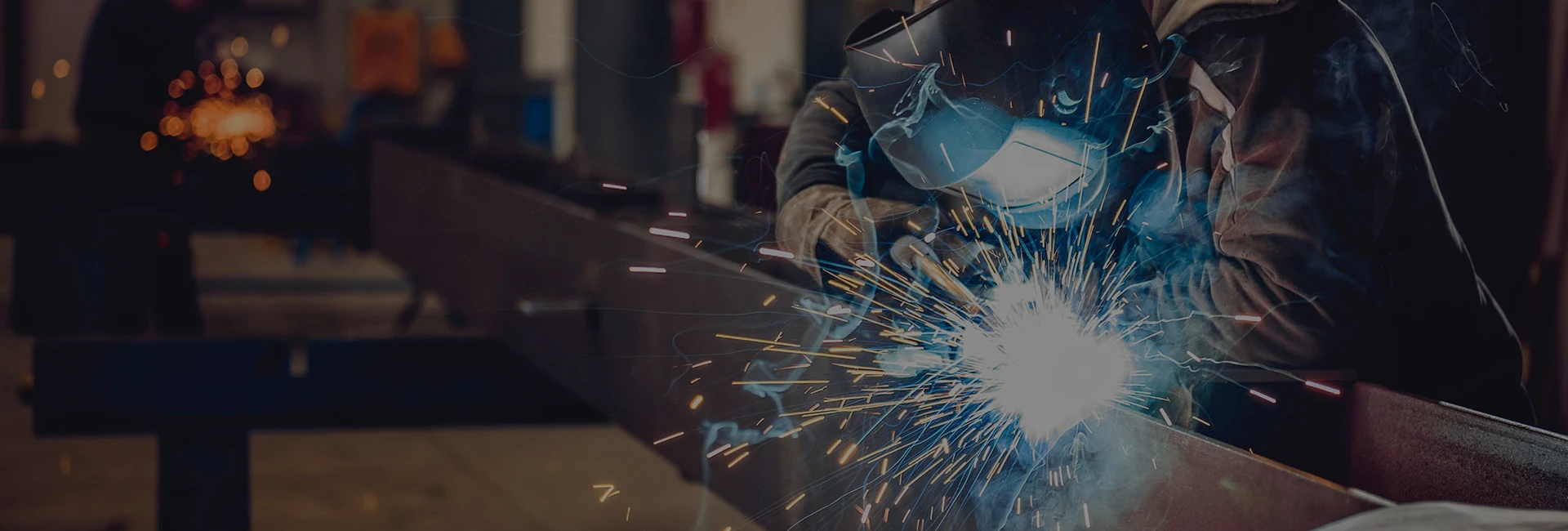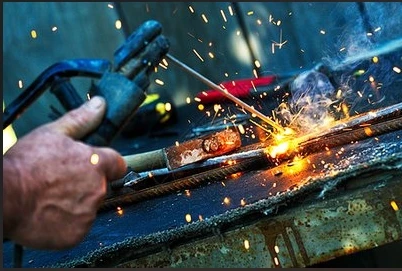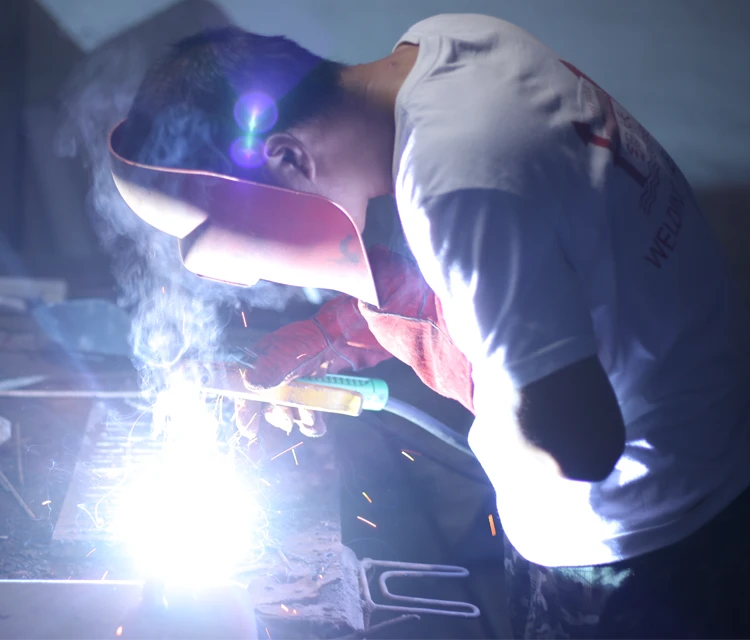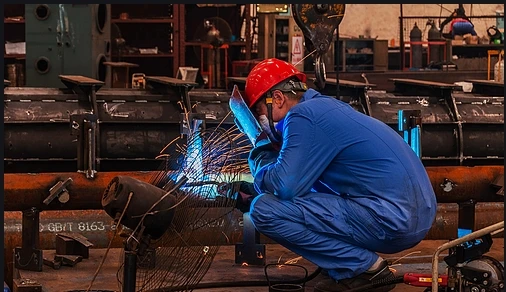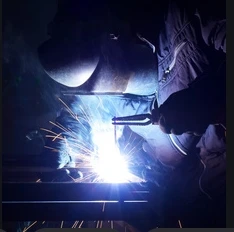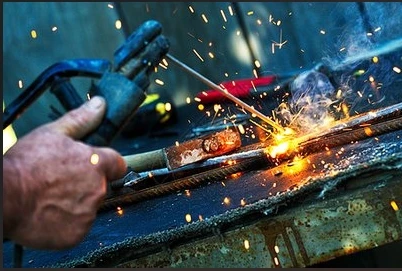Tips For Achieving Clean Beads With Solid Wire Welding
8月 . 29, 2025 15:30
Achieving clean, consistent, and visually appealing weld beads is a hallmark of skilled welding and a critical factor in ensuring joint integrity. When working with solid wire welding, particularly in gas shielded applications like those performed with a gas shielded mig welder, several factors come into play. These include equipment setup, technique, consumable selection, and environmental control. As a leading manufacturer with decades of experience, Dingzhou Jinlong Metal Production Co., Ltd., located in the industrial zone of Dingzhou city, Hebei province, China, understands these intricacies deeply. Leveraging powerful capabilities and advanced technology, we produce over 50,000 tons annually of high-quality welding consumables, including our renowned "Copper Bridge" brand solid wire welding electrodes and wires, exported globally to Southeast Asia, the Middle East, South America, and Africa. Our international advanced production lines and rigorous testing ensure products deliver arc stability, minimal spatter, uniform slag coverage (where applicable), excellent bead formation, and superior mechanical properties like strength, plasticity, toughness, and porosity resistance.
This article provides practical tips for welders aiming to perfect their beads using gas shielded solid wire welding, drawing on the consistent performance offered by high-volume industrial consumables like those produced at Dingzhou Jinlong.
Mastering Solid Wire Welding Techniques for Optimal Bead Appearance
The foundation of a clean bead starts with selecting the right consumable and mastering fundamental techniques. Solid wire welding, particularly under a shielding gas, demands precision in setup and execution.
- Perfect Your Travel Speed and Gun Angle:Consistency is paramount. Moving too fast results in a narrow, convex bead with poor penetration and potential lack of fusion. Moving too slowly causes excessive heat input, leading to a wide, flat bead prone to burn-through and warping, especially on thin materials. Maintain a steady, consistent travel speed suitable for the material thickness and joint design. Similarly, maintain a consistent gun angle, typically a 10-15 degree drag angle (pushing the weld pool). Erratic angles cause uneven bead width and profile.
- Maintain Correct Stick-Out (CTWD):Contact Tip to Work Distance (CTWD) significantly impacts bead quality and arc stability. Too long a stick-out increases electrical resistance, causing the wire to preheat excessively before entering the arc. This leads to unstable arc conditions, irregular melting, increased spatter, and potential porosity as the shielding gas coverage weakens. Too short a stick-out risks the contact tip overheating and fusing to the wire or damaging the gas diffuser. Follow manufacturer recommendations for your specific wire diameter and amperage, typically between 10-25 mm for gas shielded
- Optimize Voltage and Amperage Settings:Voltage primarily controls arc length and bead width. Higher voltage lengthens the arc, flattening the bead profile and widening it. Excess voltage causes spatter, undercut, and porosity. Low voltage creates a short, stiff arc, leading to a narrow, high-crowned bead with poor tie-in at the toes and potential stubbing. Amperage (wire feed speed) controls heat input and penetration. Finding the sweet spot for your specific joint, material, and wire is crucial. Refer to welding procedure specifications (WPS) or manufacturer charts as a starting point and fine-tune.
- Ensure Proper Joint Preparation and Fit-Up:Cleanliness and fit-up are non-negotiable for clean beads. Rust, mill scale, oil, grease, paint, and moisture are primary sources of porosity and inclusions. Thoroughly clean the joint area and adjacent base metal using appropriate methods (grinding, wire brushing, degreasing). Ensure tight fit-up with minimal gaps. Large gaps require more filler metal, increasing heat input and the risk of burn-through or distortion, and make it harder to control the weld pool, leading to irregular bead shape.
Optimizing Gas Shielded Environments for Flawless Results
The "gas shielded" aspect is critical in protecting the molten weld pool from atmospheric contamination (oxygen, nitrogen, hydrogen), which causes porosity, brittleness, and poor bead appearance. Optimizing this shield is vital.
- Select the Correct Shielding Gas Blend:The choice of gas directly impacts arc characteristics, bead profile, penetration, and spatter levels.
- 100% CO2:Economical, offers deep penetration. Drawbacks include a less stable arc, higher spatter levels, and a slightly harsher, more convex bead profile compared to mixes. Requires good technique.
- Argon/CO2 Blends:The most common blend for carbon steel. Argon stabilizes the arc, reduces spatter significantly, produces a smoother, flatter bead with nicer wetting at the toes compared to pure CO2. Penetation is slightly less than pure CO2 but more than sufficient for most applications. Higher argon percentages offer even smoother arcs and lower spatter but require precise technique due to narrower penetration profiles.
- Argon/Oxygen Blends:Primarily used for stainless steel solid wire welding, improving arc stability and bead wetting. Oxygen is not suitable for carbon steel as it promotes oxidation.
Dingzhou Jinlong's solid wire welding products, like our "Copper Bridge" series, are formulated to perform optimally with common shielding gases like CO2 and Ar/CO2 blends. - Ensure Adequate Gas Flow and Coverage:Too little flow fails to protect the weld pool, leading to porosity. Too much flow creates turbulence, drawing air into the shielding zone, also causing porosity. Use a flowmeter (not just a regulator) and set the flow according to the welding parameters and environment – typically 15-25 CFH (7-12 L/min) for MIG in a draft-free area. Increase flow in drafty conditions, but prioritize shielding the weld area from drafts using screens if possible.
- Maintain Gas Delivery System Integrity:Leaks in hoses, loose fittings, damaged gas nozzles, or blocked gas diffusers compromise shielding. Check connections regularly. Keep the nozzle clean from spatter buildup (use anti-spatter spray). Ensure the contact tip is recessed correctly within the nozzle (usually flush or slightly recessed) to promote smooth gas flow. Replace damaged components promptly.
- Minimize Drafts and Wind:Even slight breezes can blow the shielding gas away from the weld pool. Weld indoors whenever possible. If welding outdoors is unavoidable, use windbreaks around the work area. Significantly increase gas flow, but be aware this is less effective than eliminating the draft and can be wasteful.
Leveraging the Right Gas Shielded MIG Welder and Consumables
Choose a Welder with Stable Output: A constant voltage (CV) power source designed for gas shielded mig welder applications is essential. Select High-Quality Solid Wire: The wire itself is paramount. Dingzhou Jinlong produces solid wire welding consumables under strict quality control, ensuring:
- Consistent Diameter:Precise diameter control ensures stable feedability and consistent melting characteristics.
- Clean Surface:Minimizes oil, grease, or drawing lubricant contamination that causes porosity.
- Uniform Cast and Helix:Prevents "bird-nesting" in the liner and ensures smooth feeding off the spool.
- Optimized Chemistry:Formulated for specific applications (e.g., general fabrication, sheet metal, higher strength steels) to deliver the desired bead appearance, mechanical properties, and performance with common shielding gases.
- Match Wire Composition to Base Metal:Using the correct wire grade is crucial for both bead quality and joint performance. Dingzhou Jinlong offers a range of "Copper Bridge" solid wires tailored to different needs:
Dingzhou Jinlong "Copper Bridge" Solid Wire Product Range (Typical Applications & Parameters)
|
モデル |
GB Standard |
AWS Standard |
Diameter (mm) |
Polarity |
Primary Uses |
|
CB-ER50-3 |
ER50-3 |
ER70S-3 |
0.8,1.0,1.2,1.6 |
DC+ |
Welding low carbon steel parts requiring thorough surface treatment. Good all-purpose wire. |
|
CB-ER50-4 |
ER50-4 |
ER70S-4 |
0.8,1.0,1.2,1.6 |
DC+ |
1. Welding sheet metal & thin plates. |
|
CB-ER50-6 |
ER50-6 |
ER70S-6 |
0.8,1.0,1.2,1.6 |
DC+ |
Welding various 500MPa structural steel parts. Offers smooth arc & excellent bead appearance. |
|
CB-ER50-G |
GB/T ER50 |
ER70S-G |
0.8,1.0,1.2,1.6 |
DC+ |
Welding all kinds of 500MPa structural steel parts, thick plates, and thick pipelines. Versatile. |
|
CB-ER60-G |
ER60-G |
ER90S-G |
Consult Specs |
DC+ |
Suitable for welding 600MPa high-strength steel structures. |
Developed significantly since its origins in the 1950s, CO2 gas shielded welding, and its enhanced variants using Ar/CO2 blends, has become an indispensable fusion welding technique. Dingzhou Jinlong's revolutionary Gas-Shielded Solid Welding Wire range is engineered to meet the demanding needs of modern industries relying on gas shielded mig welder technology. These include automobile manufacturing, construction machinery, shipbuilding, metallurgical equipment, bridge construction, heavy engineering projects, petrochemical plants, boiler and pressure vessel fabrication, and rolling stock production. Our wires deliver the consistent performance required for high-quality, clean beads in these critical, large-volume applications.
FAQs about Solid Wire Welding
What are the common causes of porosity when using solid wire welding with a gas shielded mig welder?
The primary causes are inadequate shielding gas coverage (due to low flow, leaks, drafts, or nozzle blockage), contamination on the base metal (rust, oil, moisture, mill scale), or excessive wind blowing the gas away. Ensuring a clean workpiece, proper gas flow (15-25 CFH), intact gas delivery system, and protection from drafts are crucial.
How does the choice of shielding gas affect the bead appearance in solid wire welding?
Pure CO2 typically produces a slightly rougher bead with more spatter and a more convex profile but offers deeper penetration. Ar/CO2 blends (especially 75/25 or 80/20) provide a much more stable arc, significantly less spatter, a smoother bead surface, better wetting at the toes (flatter profile), and easier cleanup, making them preferred for applications where bead appearance is critical.
Can I use the same solid wire welding parameters when switching between different thicknesses of the same base metal?
No. Parameters (primarily voltage and wire feed speed/amperage) must be adjusted based on material thickness. Thicker materials generally require higher heat input (higher WFS/amperage and often slightly higher voltage) for proper penetration. Thinner materials require lower heat input to prevent burn-through. Always refer to procedure sheets or manufacturer recommendations and perform test welds.
What are the advantages of using a higher-quality solid wire welding for high-production environments?
High-quality wire ensures consistent diameter, clean surface finish, and uniform cast/helix. This translates directly to fewer wire feeding problems (bird-nesting, jamming), a more stable arc, significantly reduced spatter levels, consistent bead formation with minimal defects, and less downtime for cleanup or troubleshooting. This consistency maximizes productivity and reduces overall costs in large-volume welding operations.
Is it necessary to use a specific type of drive roll for solid wire welding on a gas shielded mig welder?
Yes. Solid wire requires drive rolls with a smooth U-groove profile. Knurled or V-groove rolls are designed for flux-cored wire and will deform the soft solid wire, causing feeding issues, erratic arcs, and potential bird-nesting. Always match the drive roll groove type and size precisely to the wire diameter being used.
Achieving consistently clean, strong, and visually sound weld beads with solid wire welding under a gas shielded environment requires attention to detail across multiple factors. Mastering technique (travel speed, angle, stick-out), optimizing settings (voltage, amperage), ensuring meticulous joint preparation, and selecting the right shielding gas blend lay the foundation. Equally critical is leveraging reliable equipment – a stable gas shielded mig welder with a well-maintained drive system – paired with high-quality consumables. Dingzhou Jinlong Metal Production Co., Ltd., with its advanced production capabilities in Dingzhou, Hebei, and its globally recognized "Copper Bridge" brand, provides the consistent, high-performance solid wire welding products demanded by large-scale industrial applications. By combining these premium consumables with sound welding practices and optimized gas shielding, welders can reliably produce clean beads that meet the highest standards of quality and performance across diverse sectors, from automotive manufacturing to heavy infrastructure.



